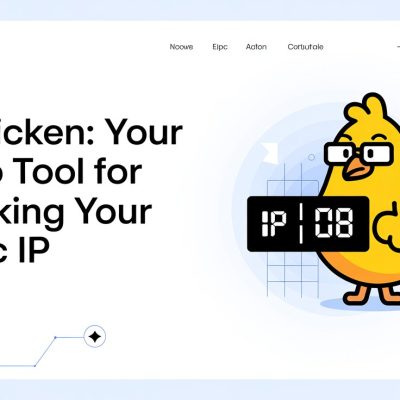When you hear about cryptocurrencies, chances are Bitcoin and Ethereum immediately come to mind. But beyond the buzz of those digital giants lies XRP, a currency with a mission — not just to exist, but to revolutionize how money moves across borders. Whether you’re new to crypto or already dabbling in digital assets, understanding XRP can open your eyes to how financial transactions might look in the future.
So, what makes XRP stand out in the crowded world of cryptocurrencies? Let’s dive in and uncover how this coin is reshaping global finance, step by step.
Understanding XRP: What Exactly Is It?
XRP is a digital currency that operates on the XRP Ledger, an open-source blockchain designed for fast and affordable transactions. Unlike Bitcoin, which relies on mining, XRP uses a consensus mechanism that validates transactions through trusted nodes — making it faster and more energy-efficient.
Think of it this way: if Bitcoin is like sending money via traditional mail, XRP is like sending it through instant messaging — quick, simple, and efficient.
XRP was created by Ripple Labs Inc., a company focused on modernizing cross-border payments for banks, financial institutions, and individuals. The currency serves as a bridge asset that helps different fiat currencies (like USD, EUR, or JPY) exchange quickly and cheaply.
A Brief History of XRP and Ripple
To understand XRP, it’s essential to look at Ripple’s journey. The story began in 2012, when developers Jed McCaleb, Chris Larsen, and David Schwartz envisioned a system that would enable secure, instant, and low-cost international money transfers.
Their solution? A blockchain protocol that would solve what banks struggled with — slow and expensive cross-border transactions. Ripple’s technology was built to address the inefficiencies of the traditional SWIFT system, which often takes several days and carries high fees.
Over time, XRP became central to Ripple’s ecosystem, serving as a liquidity token that powers transactions on its network. Ripple’s partnerships with major financial institutions worldwide have made XRP a key player in the global payment revolution.
How XRP Works: A Simple Breakdown

At its core, XRP functions as a digital bridge currency. It connects different financial systems by allowing quick conversion between various fiat currencies.
Here’s a simple example: imagine you’re sending money from the U.S. to Japan. Normally, your bank would go through multiple intermediaries — converting USD to another intermediary currency before finally arriving in JPY.
With XRP, the process looks like this:
-
Your USD is converted into XRP.
-
The XRP is transferred instantly across the ledger.
-
It’s then converted into JPY at the destination.
The entire transaction takes seconds, not days, and costs fractions of a cent. This efficiency makes XRP ideal for banks, remittance companies, and businesses that deal with international transfers daily.
RippleNet: The Network Behind XRP
RippleNet is the backbone of Ripple’s payment system. It’s a global network of financial institutions using Ripple’s technology to process payments efficiently.
RippleNet consists of three main solutions:
-
xCurrent – Focuses on real-time settlement between banks.
-
xRapid (now part of On-Demand Liquidity) – Uses XRP to provide instant liquidity for cross-border payments.
-
xVia – Simplifies payment integration through APIs for businesses.
Together, these solutions allow banks to move money faster, cheaper, and more transparently. RippleNet’s adoption by major banks and payment providers showcases the growing confidence in XRP’s utility.
Why XRP Is Different from Other Cryptocurrencies
Many people lump XRP together with Bitcoin and Ethereum, but they serve very different purposes.
Here’s how XRP stands apart:
-
Speed: Transactions settle in about 3–5 seconds, compared to Bitcoin’s 10 minutes.
-
Scalability: XRP can handle 1,500+ transactions per second, rivaling traditional payment systems like Visa.
-
Cost: Each transaction costs only a fraction of a penny.
-
Energy Efficiency: XRP doesn’t rely on mining, making it eco-friendly.
-
Focus: While most cryptocurrencies aim for decentralization or smart contracts, XRP’s goal is to improve global payments.
This combination makes XRP a unique hybrid — not just a digital currency, but a real-world financial tool.
The Role of XRP in Cross-Border Payments
Traditional international money transfers are slow and expensive, often taking up to five business days. Ripple’s solution, powered by XRP, reduces that time to mere seconds.
XRP acts as a liquidity bridge, eliminating the need for banks to hold multiple foreign currencies. Instead, they can simply convert their local currency into XRP, send it, and convert it to the desired currency at the destination.
This reduces costs dramatically, especially for:
-
Remittance services
-
International businesses
-
Financial institutions
By simplifying global transfers, XRP is redefining how money moves around the world — making it as easy as sending an email.
XRP vs. SEC: The Legal Battle That Shaped Its Future

One of the most talked-about aspects of XRP is its legal dispute with the U.S. Securities and Exchange Commission (SEC).
In December 2020, the SEC filed a lawsuit against Ripple Labs, alleging that XRP was sold as an unregistered security. This created significant uncertainty and temporarily affected XRP’s price and partnerships.
However, after years of legal proceedings, the court ruled in 2023 that XRP is not a security when traded on public exchanges. This was a major victory for Ripple and the broader crypto industry, setting a precedent for how digital assets are classified in the U.S.
Following this ruling, XRP regained market confidence and saw renewed adoption among institutions and investors alike.
XRP Price Trends and Market Performance
Like most cryptocurrencies, XRP’s price has seen its ups and downs. It reached its all-time high of $3.84 in January 2018, during the crypto boom. Since then, XRP has witnessed several waves of expansion and adjustment, mirroring the ebb and flow of the cryptocurrency market.
Market factors influencing XRP’s price include:
-
Regulatory clarity
-
Partnerships with banks
-
Global crypto trends
-
Investor sentiment
Despite volatility, XRP remains among the top 10 cryptocurrencies by market capitalization, highlighting its long-term relevance in the financial world.
Practical Uses of XRP Beyond Banking
While XRP is best known for cross-border payments, it also finds use in other areas:
-
Micropayments: Enables quick and low-cost payments for small online transactions.
-
Decentralized Finance (DeFi): Supports liquidity pools and tokenized assets on decentralized platforms.
-
NFTs: The XRP Ledger now supports non-fungible tokens, allowing artists and creators to mint and trade securely.
-
Remittances: Ideal for individuals sending money internationally with minimal fees.
In short, XRP isn’t just a banker’s tool — it’s becoming part of the broader digital economy.
The Future of XRP: What Lies Ahead

Looking ahead, XRP’s potential seems brighter than ever. With more countries exploring central bank digital currencies (CBDCs), Ripple has positioned itself as a strategic partner in these initiatives.
If governments and institutions adopt Ripple’s infrastructure, XRP could play a pivotal role in powering real-time, cross-border CBDC exchanges.
Moreover, as blockchain adoption increases, demand for fast and efficient payment solutions will naturally grow — putting XRP at the center of this financial transformation.
Risks and Considerations Before Investing in XRP
Like any investment, XRP carries risks. Its value can fluctuate based on:
-
Regulatory changes
-
Market sentiment
-
Competition from other payment-focused cryptos
-
Technological challenges
Investors should research thoroughly, diversify their portfolios, and only invest what they can afford to lose. While XRP’s fundamentals are strong, the crypto market’s volatility means caution is key.
FAQs About XRP
1. What makes XRP different from Bitcoin?
XRP focuses on cross-border payments, while Bitcoin acts as a store of value. XRP transactions are faster, cheaper, and more energy-efficient than Bitcoin’s.
2. Can XRP be mined?
No, XRP cannot be mined. All 100 billion XRP tokens were pre-mined at its inception, and a portion is gradually released into circulation.
3. Is XRP a good investment?
XRP’s value depends on market conditions and adoption by financial institutions. It’s considered a utility-based asset, but investors should always do their research before buying.
4. How long do XRP transactions take?
Typically, XRP transactions settle in 3 to 5 seconds, making it one of the fastest cryptocurrencies available.
5. Where can I buy XRP?
You can purchase XRP on major exchanges like Binance, Coinbase, and Kraken, or through Ripple’s partnered platforms, depending on your region’s regulations
Conclusion: XRP’s Role in a Connected Financial Future
To sum it up, XRP is more than a cryptocurrency — it’s a vision for a faster, fairer, and more connected global financial system. By addressing real-world payment problems, it bridges the gap between traditional banking and the digital age.
Whether you’re a casual observer or a curious investor, understanding XRP gives you a glimpse into how money might move tomorrow — instantly, globally, and without friction.










